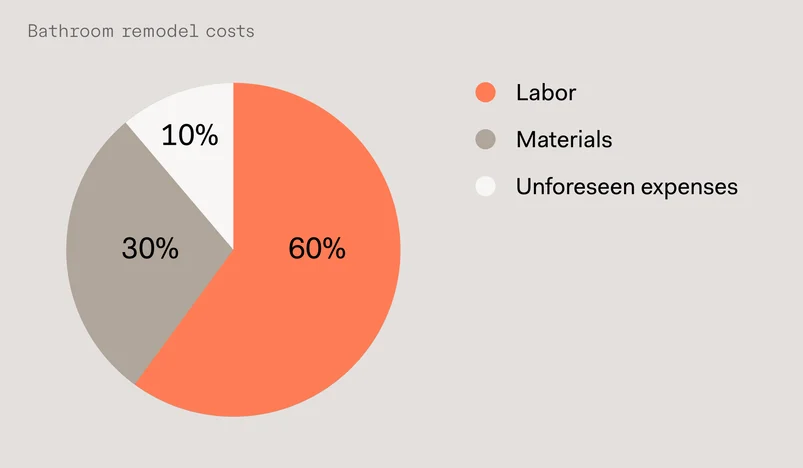Bathroom renovation is one of the most common projects under the larger umbrella of home renovation ideas. Understanding the costs is crucial to prevent overspending. This breakdown provides a realistic view of where your money goes in a typical bathroom remodel.
I. Standard Bathroom Renovation Cost Allocation
The cost varies significantly based on whether you move plumbing or keep the existing layout. Here’s a general guide:
1. Major Cost Drivers (55% – 70% of Budget)
- Fixtures (Toilet, Tub/Shower, Sink): 15% – 20%. Mid-range to high-end fixtures greatly affect the final price.
- Labor (Plumbing, Electrical, Tiling): 20% – 35%. This is often the single largest expense, especially if you move the toilet or shower.
- Vanity and Countertops: 10% – 15%. Custom built-ins cost significantly more than prefabricated units.
2. Finishing Materials and Details
- Tile and Flooring: 5% – 10%. Labor for intricate tile patterns (like Herringbone) can exceed the material cost.
- Lighting and Ventilation: 5% – 10%. Investing in quality LED lighting and quiet ventilation fans is highly recommended.
II. Smart Tips to Reduce Renovation Costs
To control your **bathroom renovation cost** without sacrificing quality:
1. Labor-Saving Strategies
- Keep the Layout: Avoid moving the toilet or shower drain. This is the quickest way to cut plumbing labor costs.
- DIY Demolition: Safely doing the tear-out yourself can save thousands in labor fees.
2. Smart Material Choices
- Large Format Tiles: Using larger tiles reduces the number of cuts and the time spent on grouting, lowering installation costs.
- Refinish, Don’t Replace: If your tub is cast iron, consider refinishing it instead of replacing it.

Ready for more? See how your bathroom fits into the larger picture of your home’s transformation in our guide: 50 Creative Home Renovation Ideas for 2025.





